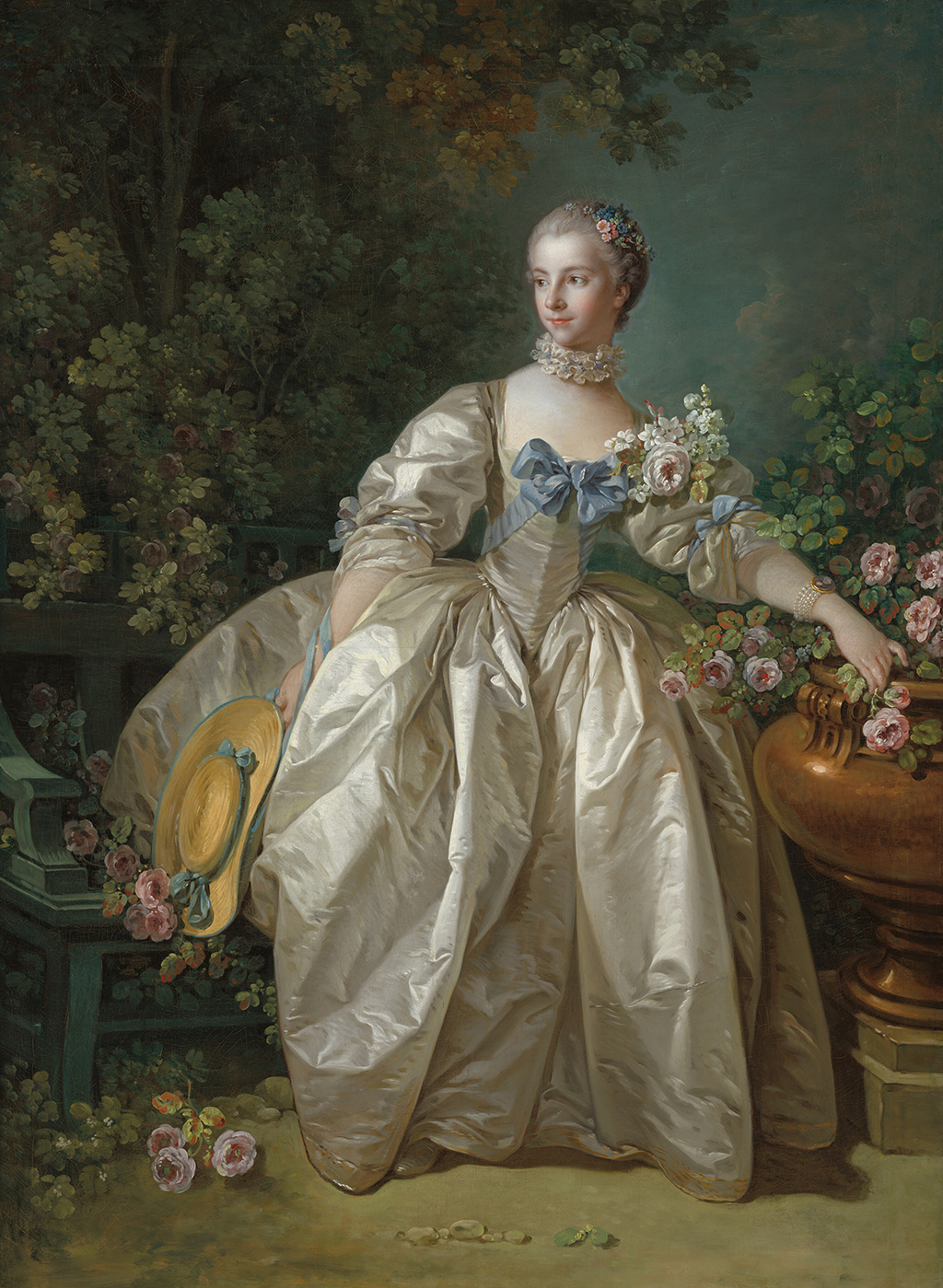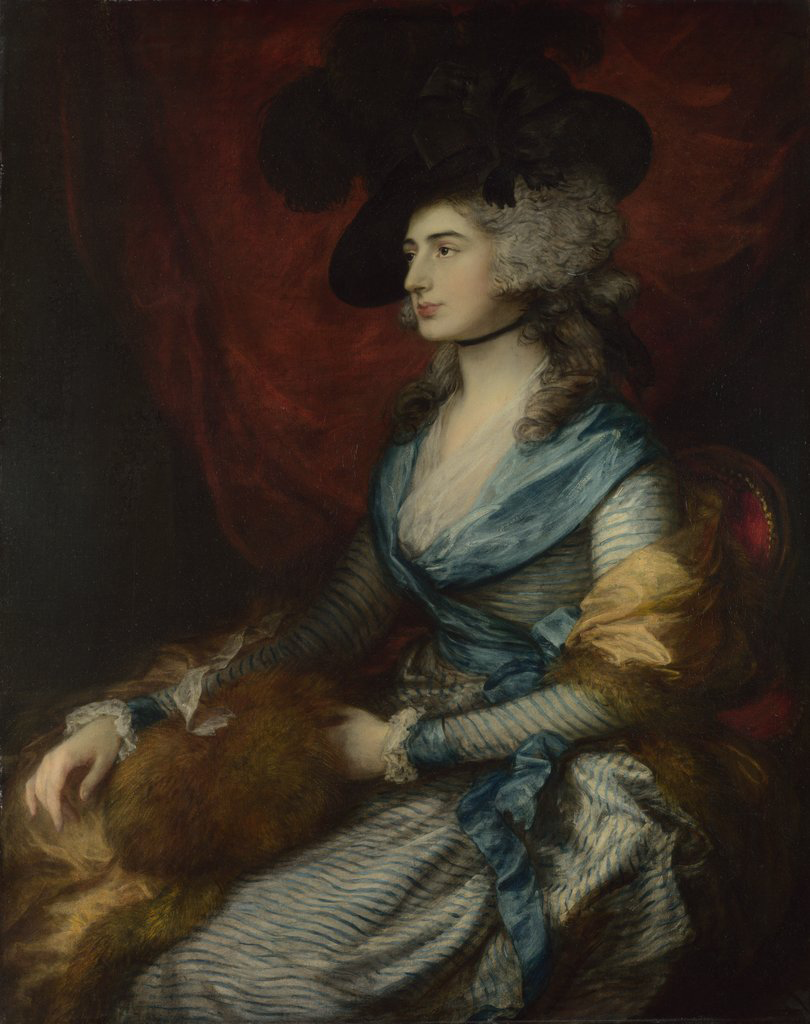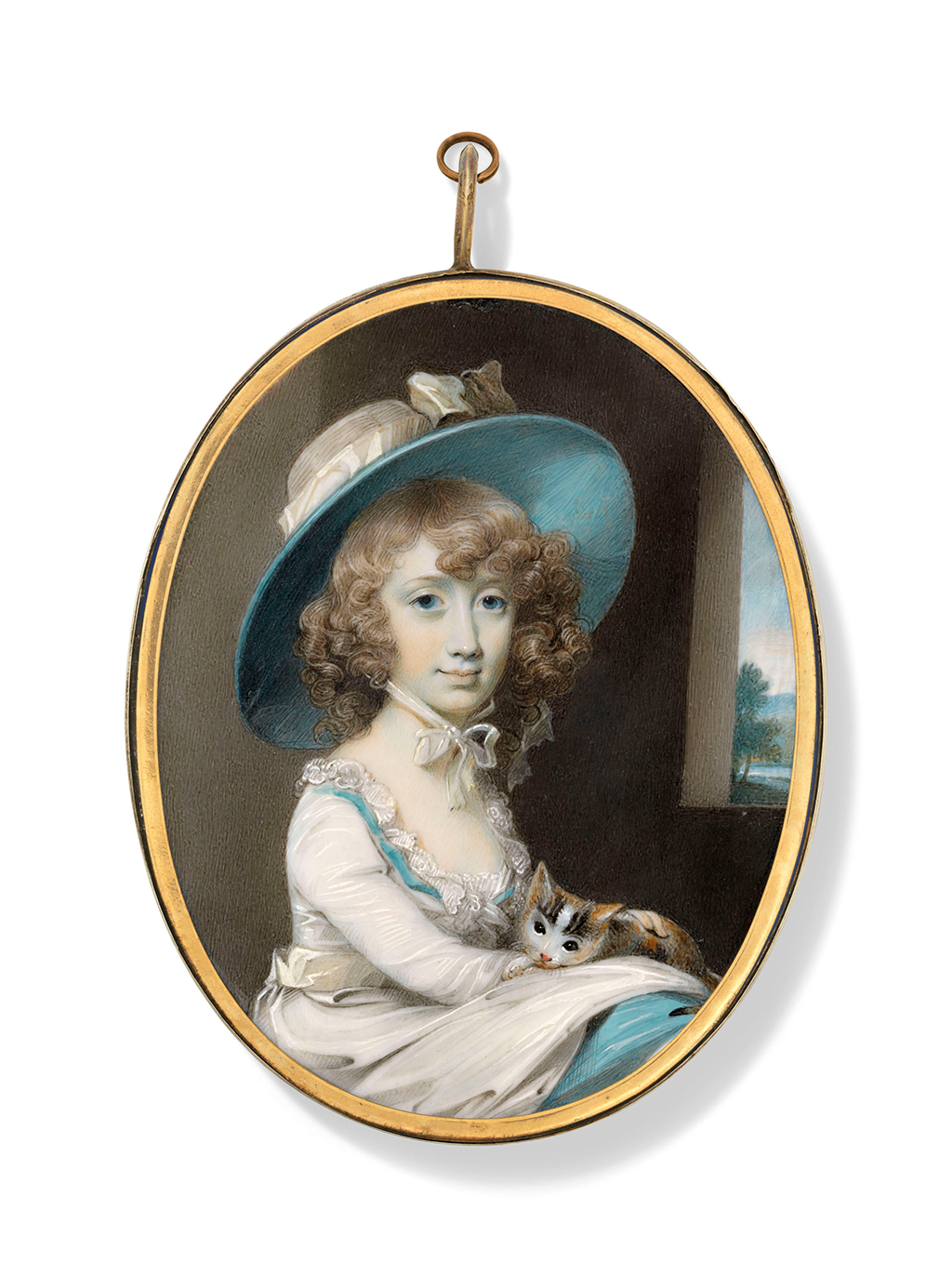Citation
Chicago:
Aimee Marcereau DeGalan, “George Engleheart, Portrait of a Woman, ca. 1785,” catalogue entry in Aimee Marcereau DeGalan, Blythe Sobol, and Maggie Keenan, The Starr Collection of Portrait Miniatures, 1500–1850: The Collections of the Nelson-Atkins Museum of Art, vol. 2, ed. Aimee Marcereau DeGalan (Kansas City, MO: Nelson-Atkins Museum of Art, 2024), https://doi.org/10.37764/8322.5.1379.
MLA:
Marcereau DeGalan, Aimee. “George Engleheart, Portrait of a Woman, ca. 1785,” catalogue entry. Aimee Marcereau DeGalan, Blythe Sobol, and Maggie Keenan. The Starr Collection of Portrait Miniatures, 1500–1850: The Collections of the Nelson-Atkins Museum of Art, edited by Aimee Marcereau DeGalan, vol. 2, Nelson-Atkins Museum of Art, 2024. doi: 10.37764/8322.5.1379.
Artist's Biography
See the artist’s biography in volume 4.
Catalogue Entry
This portrait of a young woman likely dates to around 1785, coinciding with the middle period of George Engleheart’s career. During this phase, spanning roughly 1780 to 1791, Engleheart honed his distinctive style, characterized by enlarged, deep-set eyes and pronounced shadowing down the bridge of the nose and under its tip, resulting in remarkably lifelike depictions. This was his most prolific period, with the year 1788 marking a zenith in his productivity, with 288 known commissions.1Carmela Arturi and Frederick Roger Phillips, George Engleheart and His Nephew John Cox Dillman Engleheart (Hampshire: Portrait Miniature Club, 2016), 79. It was also during this time that Engleheart frequently depicted female sitters with wide-brimmed hats, as seen here.

Hats were an essential accoutrement for the fashionable woman in eighteenth-century London, signifying both sartorial elegance and practical utility. The straw-over-silk hat worn by the young sitter here, trimmed in blue ribbons, embodies the transitional nature of fashion, combining a style known as the bergère (French for “shepherdess”) or milkmaid hat—a low-crowned, wide-brimmed hat, usually made of straw—with an underside covered in silk. These hats first appeared in the 1730s with the vogue for pastoral fashions and rural idylls and were popular in various forms throughout the eighteenth century (Fig. 1).2See Valerie Cumming, Phillis Cunnington, and C. Willett Cunnington, The Dictionary of Fashion History (Oxford: Berg, 2010), 131. In England, such interests signaled one’s connection to the land and to the important social and economic markers of land ownership. The crown of the present hat is a little taller than a typical bergère and moves closer to what became known as a “picture” hat or “Gainsborough hat,” so called because of the large-brimmed hats made fashionable by Thomas Gainsborough’s (1727–1788) many portraits of female sitters in the mid-1780s (Fig. 2). Beyond their aesthetic appeal, hats served a pragmatic purpose, shielding one’s face and fair skin from the sun’s rays.

The hat worn by the sitter in the Nelson-Atkins miniature bears a resemblance to one worn by Englehart’s niece, Millicent (or Melicent) Dillman Engleheart,3Little is known about Millicent (or Melicent) Engleheart, possibly because she died when she was just twenty. According to Engleheart’s sitter books, she sat for him numerous times. There is an entry for “Engleheart, Mill D.” in 1795, “Engleheart, Milly D.” in 1780, and “Engleheart, M. D.” in 1787, 1790, and 1800, which could be for Millicent or her sister Mary. See Arturi and Phillips, George Engleheart, 96. in a portrait of her at age thirteen from 1788 (Fig. 3). Curiously, some of her physical features, including the loose brown curls and piercing blue eyes, are also shared by the present sitter. However, the age disparity between Engleheart’s niece and the Nelson-Atkins sitter—in two portraits realized around the same time—renders a direct connection improbable.

The woman in the present portrait is slightly older and likely of marrying age. Engleheart imbues her with a sense of coquettish confidence as she stares out directly to confront the viewer’s gaze, possibly that of a young suitor for whom this miniature may originally have been intended. Engleheart employs a restrained palette dominated by whites, blues, grays, and blacks to create a striking monochromatic effect, with brushwork arranged in a highly stylized linear fashion characteristic of this moment in his career. Set against a modulated background sky ranging from mauve to blue and gray, the sitter appears to be outside, thus connecting her to the land and possibly to the landed classes.
Engleheart’s clientele, predominantly drawn from upper-middle-class and aristocratic circles, reflects the socioeconomic context of the era. The artist’s fees in the mid-1780s ranged from eight to ten guineas, underscoring the exclusivity of his patronage within elite strata of society4Arturi and Phillips, George Engleheart, 79; George Williamson, George Engleheart, 1750–1829 Miniature Painter to George III (London: George Bell and Sons, 1902), 38.; in 1795, the government-mandated minimum nine months’ salary for a family of four was twelve guineas.5John L. Hammond and Barbara Hammond, The Village Labourer, 1760–1832: A Study in the Government of England Before the Reform Bill (London: Longmans, Green, 1927), 11:189–90, cited in Julie Aronson and Marjorie Wieseman, Perfect Likeness: European and American Portrait Miniatures from the Cincinnati Art Museum (New Haven and London: Yale University Press, 2006), 240. While the identity of this fashionable young sitter remains unknown, Engleheart’s masterful portrayal offers a window into the cultural milieu and sartorial conventions of late eighteenth-century Britain.
Notes
-
Carmela Arturi and Frederick Roger Phillips, George Engleheart and His Nephew John Cox Dillman Engleheart (Hampshire: Portrait Miniature Club, 2016), 79.
-
See Valerie Cumming, Phillis Cunnington, and C. Willett Cunnington, The Dictionary of Fashion History (Oxford: Berg, 2010), 131.
-
Little is known about Millicent (or Melicent) Engleheart, possibly because she died when she was just twenty. According to Engleheart’s sitter books, she sat for him numerous times. There is an entry for “Engleheart, Mill D.” in 1795, “Engleheart, Milly D.” in 1780, and “Engleheart, M. D.” in 1787, 1790, and 1800, which could be for Millicent or her sister Mary. See Arturi and Phillips, George Engleheart, 96.
-
Arturi and Phillips, George Engleheart, 79; George Williamson, George Engleheart, 1750–1829: Miniature Painter to George III (London: George Bell and Sons, 1902), 38.
-
John L. Hammond and Barbara Hammond, The Village Labourer, 1760–1832: A Study in the Government of England Before the Reform Bill (London: Longmans, Green, 1927), 11:189–90, cited in Julie Aronson and Marjorie Wieseman, Perfect Likeness: European and American Portrait Miniatures from the Cincinnati Art Museum (New Haven and London: Yale University Press, 2006), 240.
Provenance
Possibly Mrs. Marjorie Rees, by November 11, 1954 [1];
Purchased from her sale, Fine Portrait Miniatures, Faberge, Watches, and Objects of Vertu, Sotheby’s, London, November 11, 1954, lot 43, as A Small Miniature of a Lady, by Leggatt Brothers, London, probably on behalf of Mr. John W. (1905–2000) and Mrs. Martha Jane (1906–2011) Starr, Kansas City, MO, 1954–1958 [2];
Their gift to The Nelson-Atkins Museum of Art, Kansas City, MO, 1958.
Notes
[1] Additional information on Rees remains unknown, but her life dates may be ca. 1899–1955.
[2] The lot description states, “A small miniature of a Lady by George Engleheart, nearly full face, in straw hat with blue ribbon, her dress with wide white frilled collar, oval, 1 3/8 in.” An annotated sales catalogue is located at the University of Missouri-Kansas City, Miller Nichols Library and is likely annotated by Mr. or Mrs. Starr with a check mark, “B-140,” and “£40.”
According to an attached price list, Leggatt Brothers bought lot 43 for 40 pounds. Archival research has shown that Leggatt Brothers served as purchasing agents for the Starrs. See correspondence between Betty Hogg and Martha Jane Starr, May 15 and June 3, 1950, Nelson-Atkins curatorial files.
Exhibitions
The Starr Foundation Collection of Miniatures, The Royal Ontario Museum, Toronto, December 8, 1972–January 14, 1973, no cat., no. 71, as Unknown Lady.
References
Catalogue of Fine Portrait Miniatures, Faberge, Watches and Objects of Vertu (London: Sotheby’s, November 11, 1954), 8, as A Lady.
Ross E. Taggart, The Starr Collection of Miniatures in the William Rockhill Nelson Gallery (Kansas City, MO: Nelson Gallery-Atkins Museum, 1971), no. 71, p. 27, (repro.), as Unknown Lady.
No known related works at this time. If you have additional information on this object, please tell us more.